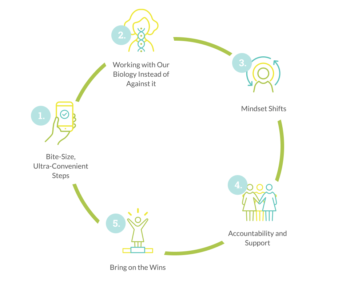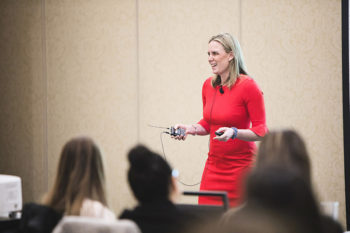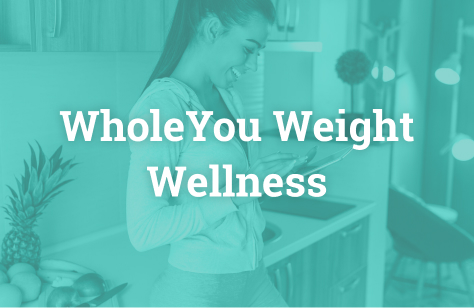Last week we covered the basics of the gut brain axis, food and the immune system and microbiome dysbiosis. This week. FOOD.

FOODS RECOMMENDED FOR HEALTHY MICROBIOME
An easy way to keep the best microbiome for the gut brain axis is to ….. this is going to sound familiar…. eat a diet rich in whole foods and fiber and low in processed and high sugar foods. You can also make sure to eat foods that are rich in prebiotics (not probiotics, which are supplements of good bacteria, prebiotics are foods that help your gut flourish the good bacteria).
- Switch to food you eat that increase the good gut bacteria that you already have (aka food feeding the 100trill bacteria you already have and keeping them stoked).
- Eating a diversity of fruits and vegetables is #1 way to get this. Follow predominantly plan-based diet, not saying you have to be totally vegetarian or vegan, although evidence in lifestyle medicine points that way, but my opinion is that if you flip and get 90% fruits and vegetables (whereas US ave is 20-30%), you will be well on your way to making a huge difference.
- Fiber is the underlying reason for most of the “plants are better” recommendation. Dietary recommendations are for 25-35g / day, the average American get half of that and only 5% of us get the recommended amount. Lifestyle medicine evidence shows that we probably actually need 45g / day. Getting this fiber from whole grains, whole fruits, whole vegetables, legumes is best, supplementation is not nearly as effective. As I always say to my Wholist clients, if it looks like it was grown, eat it; if it comes in a box, don’t. There is likely also a connection of natural fiber and the amount of inflammation of the gut and body. NHANES study found that the more fiber someone ate, the lower chance of metabolic syndrome, inflammation, obesity…. and a connection of the lack of fiber (more fatty foods, animal products, refined sugars and grains) to just the opposite. In fact, the American college of epid released an article showing that increasing your fiber by 10g/day, caused a 10% reduction in all cause mortality (death for any reason). WOW, what a public health benefit
- Fermented foods also really help: kefir, yogurt, kombucha, kimchi, sauerkraut etc. Your body makes SCFA and other needed digestive enzymes from fermenting fiber itself, and it can feed your gut bacteria with these results. So feed it already fermented and you are on your way efficiently delivering that.
- Consistency is key, it takes only 3 days to change to dysbiosis or back to balance (which is both awesome and awful at that same time, as it means you can get off kilter fast with lifestyle choices, but also start to recover fast), so consistency consistency consistency
- Diversity of fruits and vegetables is also key- introduce different types, alternate, change it up- expose gut to as many different opportunities to diversify itself- more species the better

Here are some of the most important ones (lifted this paragraph from Healthline, so thanks! Love all the pub med references)
- Omega-3 fats: These fats are found in oily fish and also in high quantities in the human brain. Studies in humans and animals show that omega-3s can increase good bacteria in the gut and reduce risk of brain disorders (29, 30, 31).
- Fermented foods: Yogurt, kefir, sauerkraut and cheese all contain healthy microbes such as lactic acid bacteria. Fermented foods have been shown to alter brain activity (32).
- High-fiber foods: Whole grains, nuts, seeds, fruits and vegetables all contain prebiotic fibers that are good for your gut bacteria. Prebiotics can reduce stress hormone in humans (33).
- Polyphenol-rich foods: Cocoa, green tea, olive oil and coffee all contain polyphenols, which are plant chemicals that are digested by your gut bacteria. Polyphenols increase healthy gut bacteria and may improve cognition (34, 35).
- Tryptophan-rich foods: Tryptophan is an amino acid that is converted into the neurotransmitter serotonin. Foods that are high in tryptophan include turkey, eggs and cheese
 PS How long to recover from antibiotics-
PS How long to recover from antibiotics-I know this is off my topic for today, but as an emergency physician who has to make big decisions on antibiotics nearly 15 times a day, this is huge. If you take a single course of ciprofloxacin, you can be in dysbiosis for up to a year and even then, you are still not functioning perfectly because of the gut’s antibiotic resistance. And by age 40, many of us in the US have had up to 30 courses of prescribed antibiotics or ingested antibiotics in the foods we eat. You are going to need antibiotics at some point, this is not in your control, if you have a bacterial illness, you will need it. But be cautious, only take when bacterial cause is known and it is necessary (Dr Sarina Pasricha, a gastroenterologist who specializes in gut health and plant based living for GI health, told me when I was interviewing her for my podcast on this topic – think of antibiotics like weed killers, they kill the weeds but also healthy flowers etc- she says to use FOOD like we talked about earlier, as PREBIOTICS to feed healthy gut bacteria back to flourishing after antibiotics… mostly all plant based, consistent, diverse, whole veggies and fruits, starting 2 weeks after antibiotics for at least 2-3 months. Find her on IG @docsarina, she’s great, shout for the tips)
Next week! Food addiction strategies
Next week! Food addiction strategies

©Tamara Kenyon Photography | http://tamarakenyon.com
Who I am
I am Dr Heather Hammerstedt, I have my doctorate in medicine, board certification in emergency medicine and lifestyle medicine, an integrative nutrition health coaching certificate, a medical acupuncture certificate, a masters in public health, and two tiny crazy muppet humans and a hilarious husband who keep me honest. I’m also the CEO and Founder of Wholist, a lifestyle medicine coaching and consulting company that specializes in helping busy professional transform their current and future health futures to meet their goals, all with evidence, education, empowerment delivered by flexible technology to meet you where you are to help you succeed.




